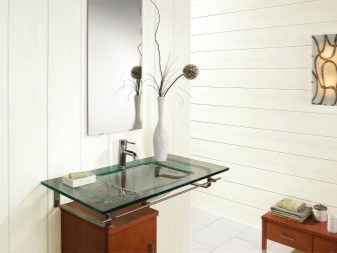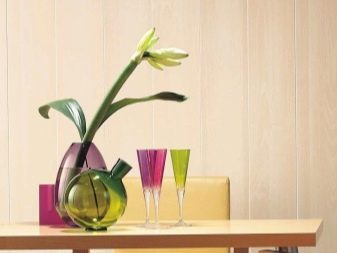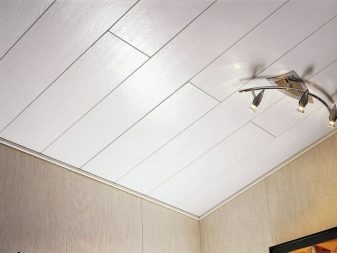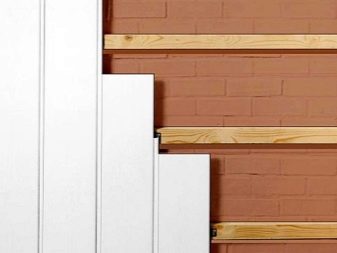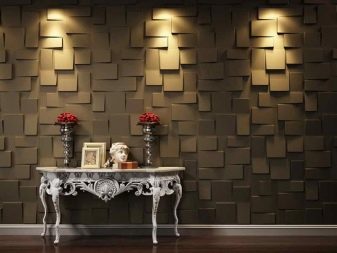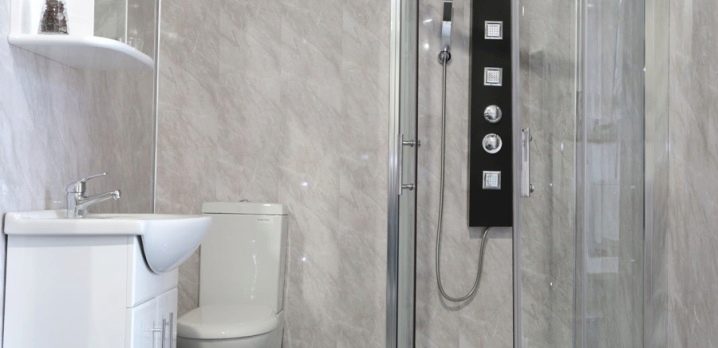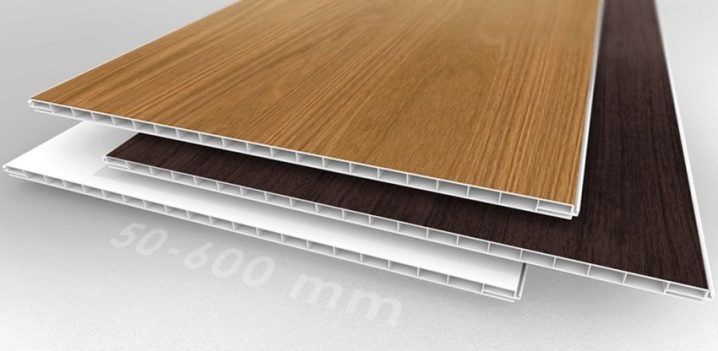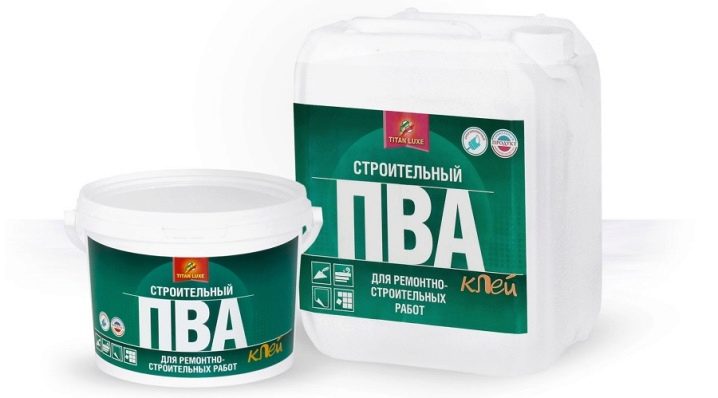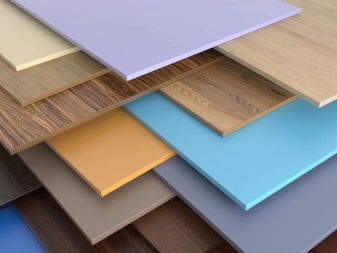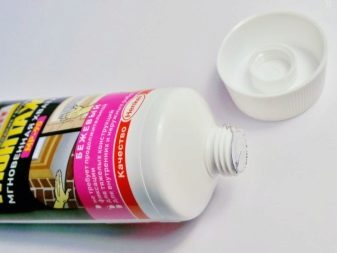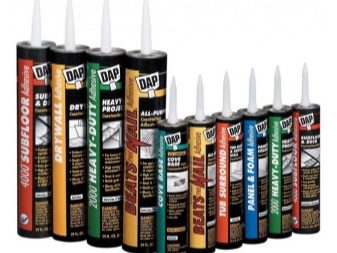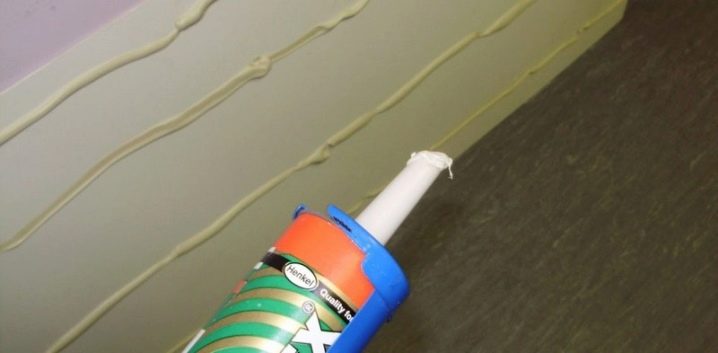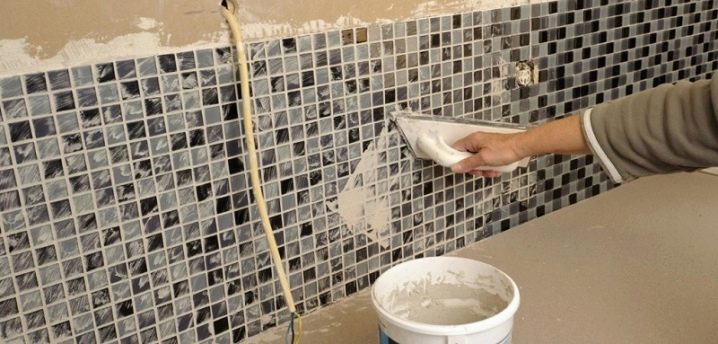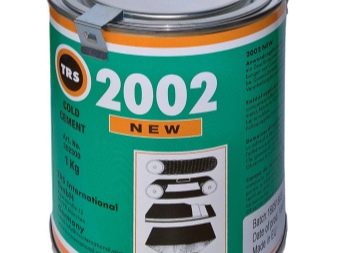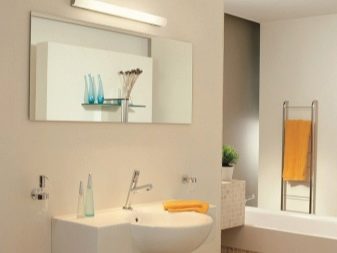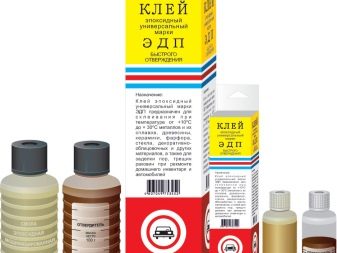Glue for PVC panels: features of choice
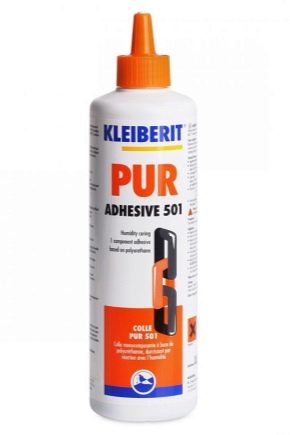
Modern manufacturers of building materials offer the buyer a versatile, practical, aesthetic and low-cost finishing material - PVC panels. Due to its technical characteristics, ease of installation and the huge color range of the panel, they took leading positions in the sales rating of building materials. The possibility of using for finishing any surfaces in rooms of various purposes with normal and high humidity, making the necessary decorative elements are indisputable advantages of the material, which made it popular and popular among buyers.
Features PVC panels
Plastic PVC panels - a beautiful, high-quality, cheap finishing material, consisting of reliable and resistant to mechanical damage of polyvinyl chloride. The decorative pattern applied on the front side using the method of monochrome thermal printing or decorative lamination is covered with paint that does not create glare and reflection, or with glossy paints and varnishes. The protective layer of lacquer increases the strength of the structure against mechanical damage and ultraviolet radiation.
Panels are divided into wall and ceiling. Wall panels are durable, thick and resistant to mechanical loads. Ceiling options include thin panels that are quite flexible materials.
Among the huge number of advantages, professional builders distinguish the most significant positions:
- versatility and wide range of application - the ability to use for finishing any surfaces for various purposes: walls, floors, door and window slopes, interior items;
- affordable price;
- moisture-proof and vapor-proof properties;
- long service life;
- resistance to liquid cleaning agents;
- strength;
- high sound-proofing and heat-conducting indicators;
- a huge range - the production of material of different textures, sizes and colors;
- ability to hide surface defects, wiring and pipes;
- resistance to temperature fluctuations;
- environmental safety - lack of phenol-formaldehyde resins in the process and coating of sheets with water-based paint;
- simplicity and speed of installation — on flat surfaces, special glue is used for fixing; to mask the defects of the working surface of the panel, they are fixed on a wooden or metal frame;
- aesthetic appeal.
Disadvantages:
- the fragility of the panels at low temperatures and mechanical damage;
- open fire with toxic and toxic smoke;
- color change under the action of ultraviolet rays;
- unpleasant smell of new designs;
- unwanted use in children's rooms and bedrooms.
Manufacturers produce several types of panels with different ways of connection:
- seamless - have a flat surface with inconspicuous joints;
- relief - have minor differences;
- Rustic - seamless bevel panels.
PVC finishing material is monochromatic, lacquered, printed and laminated.
The market of building materials offers the buyer a huge range of panels.
To choose the right material, you need to take into account some of its characteristics:
- product size;
- no defects;
- number of stiffeners;
- type of attachment;
- mass;
- composition;
- price range;
- manufacturer.
PVC panels are a budget option for finishing different rooms with a simple installation method.
Types of glue
Installing panels on a special glue is a simple and inexpensive way for novice builders to perform finishing work.
Adhesives to perform this type of finishing work must have some properties:
- moisture resistance - for reliable fixation of the structure in rooms with high humidity;
- resistance to temperature fluctuations and ultraviolet radiation;
- elasticity;
- antiseptic properties and resistance to mold and fungi;
- economical and convenient packaging;
- high percentage of setting, transparency and adhesion;
- no unpleasant odor and harmful substances.
Manufacturers of adhesives indicate on the packaging, for what types of work and materials they are suitable. Illiterate choice of glue or poor quality of the composition will significantly reduce the period of operation of the structure, will lead to a change in color, structure and shedding fixing means. The market of building materials offers two types of glue: one-component and two-component. The first type is a ready-made solution, which is characterized by ease of application and operation. The second is a set consisting of an adhesive base and a thickener, a durable and reliable composition for professional builders.
Depending on the properties, adhesives are:
- fixing - fix elements to the working surface;
- reactive - used to work with large items;
- contact - durable and reliable solutions;
- dispersive - glue is applied only on the surface of the base, which significantly reduces the consumption of the composition and reduces the finishing time.
The most demanded products on the shelves of hardware stores are liquid nails, goods from the Titan brand, Moment Installation glue,cold welding "Second" of type T (for multi-component and multi-layer types of surface), mounting foam.
The most popular adhesive compound with high positive reviews - liquid nails.
It has the following universal properties:
- environmental Safety:
- water-resistant composition - used for decoration of bathrooms, swimming pools and kitchen aprons;
- consistency in the form of a paste with a transparent beige tint;
- antibacterial composition - prevents the development of mold and fungi in a warm and humid environment;
- small consumption: 50 g per 1 m2.
Rules for applying adhesive:
- Before starting work, it is necessary to degrease the surface with alcohol-based solutions;
- an adhesive based on vinyl chloride polymer is used for plastic, and thermoplastic compounds are used to fasten rubber;
- the composition must be applied evenly;
- the use of high temperatures will increase the percentage of setting of the structure and working base;
- It is necessary to eliminate the load on the surface for the first 24 hours.
Mistakes when choosing glue:
- incorrect calculation of the effect of loads on the structure;
- mismatch of type of glue and type of coating;
- non-compliance with temperature ranges.
How to choose?
When choosing an adhesive, the buyer must take into account the type of surface, operating conditions, price range of goods and some requirements for adhesive composition.
Glue must have the following qualities:
- keep colorless after drying;
- have high retention performance, securely fasten the structure;
- have resistance to temperature, sunlight and humidity;
- environmental safety is an important indicator when choosing glue.
For wall panels suitable glue gun with hot melt adhesive, liquid nails or non-expanding polyurethane sealants.
To carry out finishing work in the bathroom, experts recommend using only special formulations. A bathroom is a room with a complex microclimate with high humidity and temperature changes. Adhesive for PVC panels should have such characteristics as moisture resistance, resistance to temperature extremes and UV radiation, as well as enhanced antibacterial indicators.
Special attention should be paid to fixing the mirrors in the bathroom. It is better to fix the mirror on concrete or tile with special adhesive compositions based on resins and rubber, which do not damage the mirror surface, are resistant to moisture, have a short period and high setting strength, do not emit toxic substances.
For bonding modern flooring and sheet finishing materials manufacturers offer customers several types of adhesives:
- polymer - elastic, durable, resistant to the negative effects of the environment;
- polymer cement - durable and reliable composition;
- acrylic - strengthens the surface and lets steam;
- polyurethane - consists of rubber, universal composition for PVC panels;
- epoxy - mounting composition for exterior and technical applications.
Application tips
The preparatory stage - the key to high-quality and fast installation.
Before fastening PVC panels, it is necessary to perform finishing work:
- clean the work surface from dust and grease, level and putty all defects;
- coat the base with a deep penetration primer;
- let the surface dry.
For fast and high-quality work, professional builders advise you to follow these rules:
- layouts of sheets to do on the front side to obtain even and precise details;
- identify and mark the place of attachment of the first sheet, start work from the door or corner
- number the details of the intended pattern;
- apply glue dotted to the entire surface of the panel and the wall;
- firmly pressing the material to the working surface, hold until the composition is fully set;
- remove excess glue from the surface;
- remove the protective film from the finishing material.
For the quality of the finishing work, it is necessary to strictly follow the technological process and follow all the rules and regulations of the work - only then the work performed will bring moral satisfaction, and the material will last for a long time and reliably.
For information on how to glue plastic panels when finishing the walls in the bathroom, see the following video.
